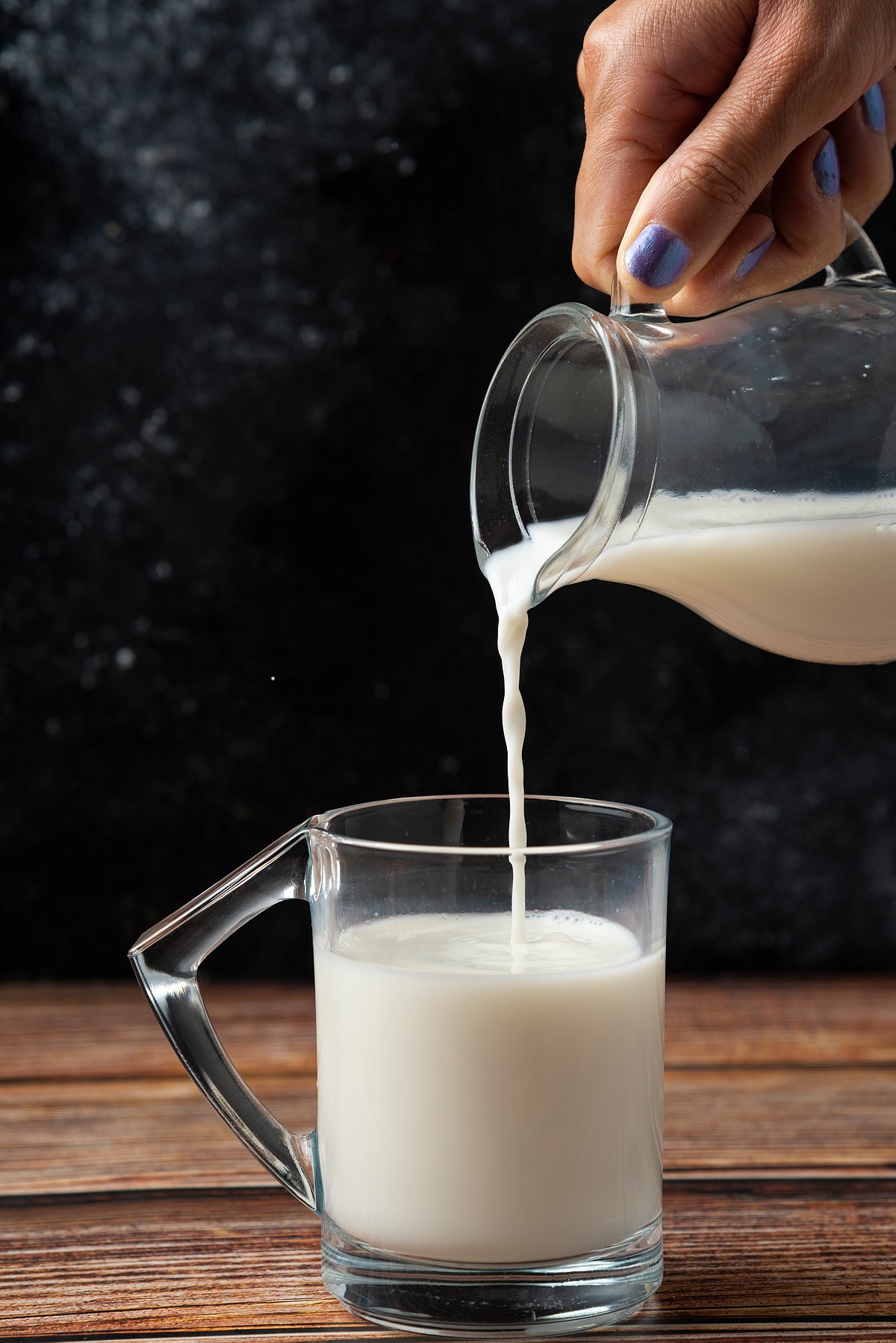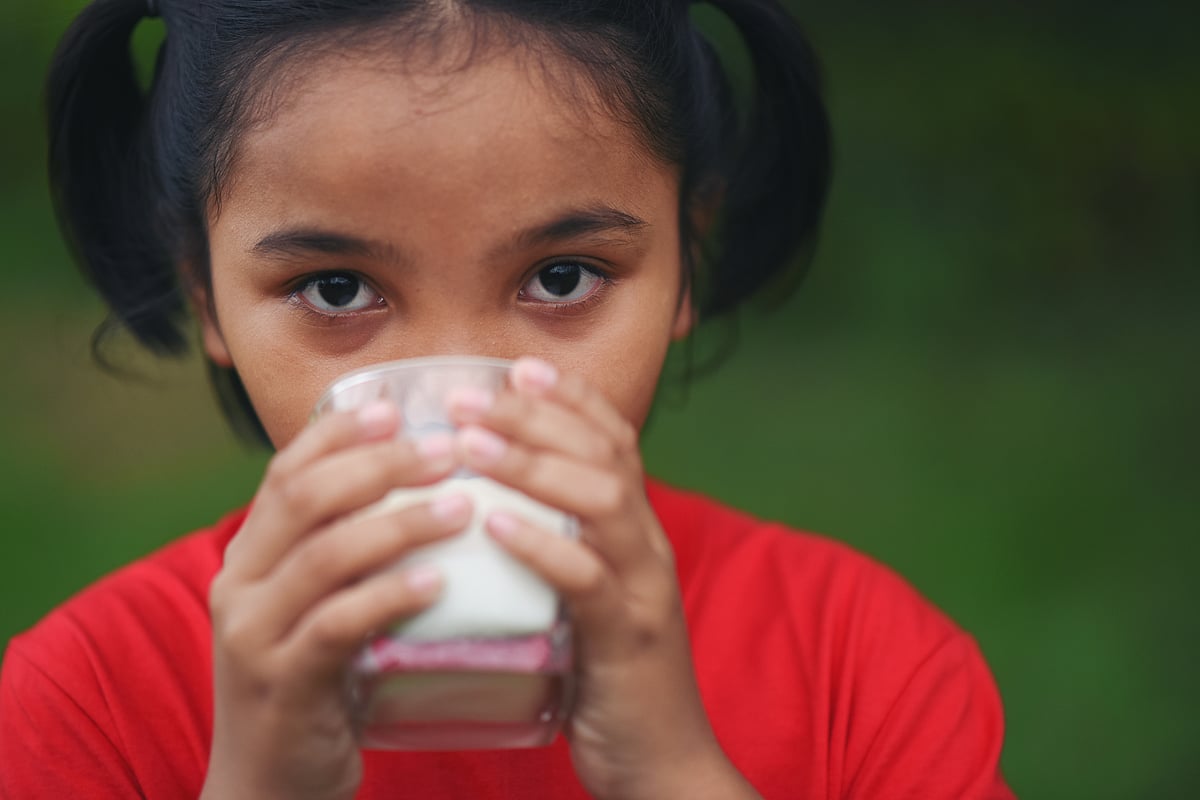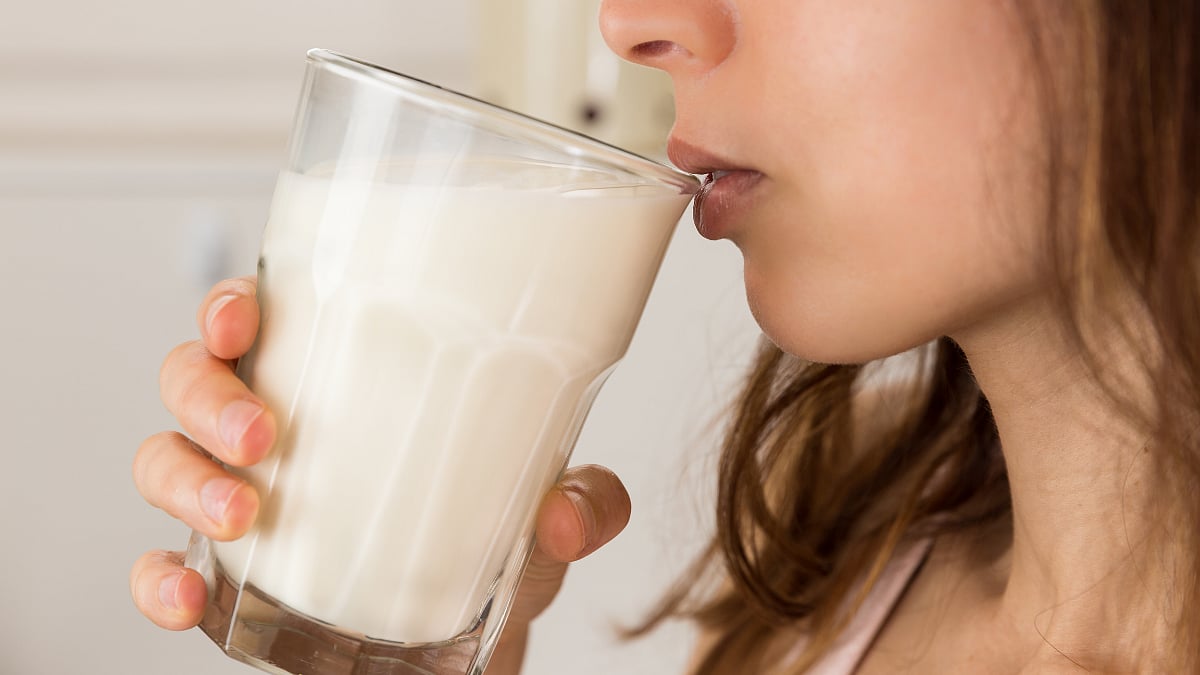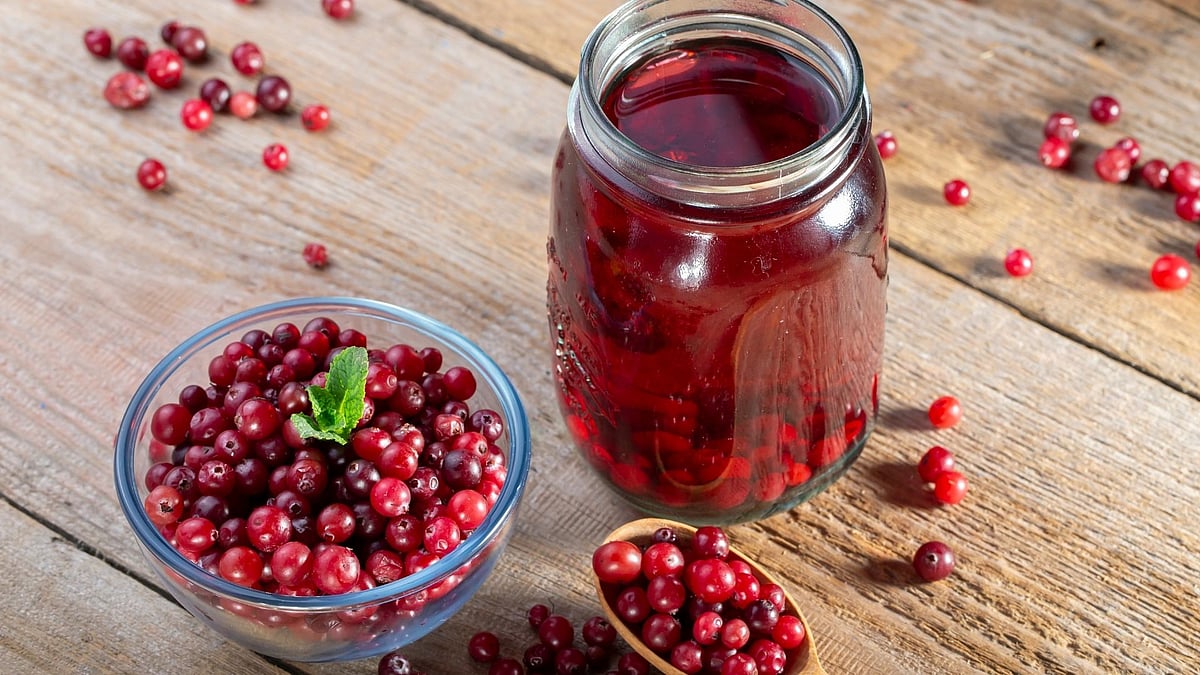The white stream submerges countless Indian households — right from a humble shanty to the upper crust of our society — since early morning. This is an everyday routine. The democratic flood sweeps across all classes and demographies to ensure health and strength with a daily dose of shiny snow-white fluid.
Be it of packaged, pouched, tetrapack or bottled variety or poured inside a can or a glass, milk is a universally recommended health drink and ingredient for a child’s growth and consolidation of its bones and teeth. Different provinces of India opt for jersey cow, buffalo, goat, yak, sheep or camel milk depending on their regional cattle breed and availability.
Come Wednesday, Nov 26, is the National Milk Day. But a heated debate still rages on around this nourishing white liquid. Toned or skimmed milk versus fatty creamy milk; raw or pasteuriused milk; A1 against A2 milk — which is a healthier option? Milk with low-calorie content is reckoned as a better alternative to full-cream indulgence as it preserves essential nutrients like protein and calcium, plus trims the fat to a nominal percent.
A1 versus A2

“A1 milk carries A1 beta-casein, which may break down into a compound linked to digestive discomfort in some people, while A2 milk contains only A2 beta-casein, which is easy to digest. A2 milk is often well-tolerated, especially by those who experience bloating or sensitivity with regular milk. So, A2 is gentle on the stomach and preferable too,” affirms dietician Nisha (consultant-dietary, nutrition and lactation at Motherhood Hospitals in Gurgaon) to differentiate between the two categories.
Even a simple nutritious beverage like milk can spark discussions on what kind to endorse and what to abstain from. “Walk into any grocery store and you’re inundated with choices that didn’t exist a generation ago —A2 milk, low-fat milk, raw milk, almond milk, soy milk, oat milk, et al. Parents, fitness enthusiasts and doctors too often disagree about what’s ideal for a minor or a grown-up. A clear, meaningful breakdown of the aforesaid terms could guide consumers to zero in on the right pick for them sans the noisy marketing hustle,” opines Dr. Tehseen Siddiqui, chief dietician at Saifee Hospital.
The A1-A2 conversation centers on just one element: beta-casein, a protein found naturally in cow’s milk. Most commercial dairy consists of a mix of A1 and A2 proteins. A2 milk is extracted from cows that naturally produce only the A2 type.
“Some studies suggest that as A1 protein breaks down in the body, it releases a small compound called BCM-7, which may irritate the gut in certain people. Not everyone feels this but individuals who frequently put on weight or endure gas problem with regular milk consumption report convenience with A2 milk,” states Dr. Siddiqui.
Nutritionally though, A1 and A2 milk are almost identical consisting of same calcium and vitamins and equal protein count. So the main point is how your body responds to the two. “If regular milk bothers your stomach (and lactose intolerance isn’t the issue), then A2 milk might be worth trying,” said the doctor.
Calorie count

The fat query revolves around cream or toned milk. Milk labels can be confusing, especially when it comes to fat composition.
“Toned milk is low in fat, lighter in calories as well as on pockets and suitable for daily use, while full-cream milk has higher calories and is richer and creamier. So, opt for toned milk when it comes to daily drinking. Incidentally, full-cream milk will be advisable for children or people who tend to require extra calories,” volunteers Ms Nisha.
Full cream milk possesses natural fat that comes straight from the cow — usually around 3.5% or more. It also contains more of the fat-soluble vitamins A, D, E and K. Toned milk, however, has some of that fat removed from it. “You get nearly the same amount of protein and calcium but with fewer calories and less saturated fat,” notes Dr. Siddiqui.
“For children below two, full-fat milk is usually suggested to support brain development and rapid growth. For most adults though, especially anyone watching weight or cholesterol, toned milk offers the same nutrition with fewer calories,” she further maintains.
Raw or pasteurised?

The argument between raw and pasteurized milk continues. What's the distinction between the two?
“Raw milk is unheated and collected straight from the source, while pasteurised milk is briefly heated to kill harmful bacteria. Pasteurised milk is safer for consumption, whereas raw milk involves higher risk of infections. So, everyone should stay vigilant and avoid using raw milk,” insists Ms Nisha.
These days, raw milk has developed a bit of a fan base. Supporters argue that milk in its natural form is richer in enzymes, beneficial bacteria and nutrients that supposedly get damaged during heating. On the flip side, raw milk can carry dangerous bacteria like E. coli, Salmonella and Listeria.
“These aren’t mild stomach bugs. In fact, they can lead to severe illness, especially in children, pregnant women and older adults,” stresses Dr. Siddiqui.
“The brief heating process of pasteurisation was invented precisely to prevent diseases caused by the above-mentioned bacteria. And despite what social media claims, the nutrient loss from pasteurisation is quite negligible. The milk remains nutritionally strong and is a far safer option in terms of assessing theoretical benefits as well as the proven risks,” informs Dr. Siddiqui.
Dairy routine
Drinking milk is a good habit and should be inculcated on a daily basis since childhood. Meanwhile, the opposite view renders that it is just a fad injected through generations.
Milk is undeniably nutrient-dense, riding robustly on its eclectic profile of high-quality protein, calcium, vitamin D and several B-vitamins. It promotes overall development and should be fed without fail.
For children, it backs bone strength and growth. For adults, it can be a comfortable route to meet calcium or protein needs. But milk is not a magical must-have.
“People, who aren’t really fond of milk or avert it for ethical or religious reasons, can absolutely meet their nutritional requirements from other food sources. Think of milk as a useful edible, not a nutritional feed,” assures Dr. Siddiqui.
As a paediatrician, Dr. Jaykishan Tripathi believes that “milk can play a valuable role in a child’s diet because it naturally provides healthy fats besides other nutrients. These benefits are backed by science, not tradition alone.”
The consultant at the paediatric critical care of KIMS Hospitals, Thane, also emphasises that “milk is not mandatory for every child. Some may be lactose intolerant (the inability to completely digest lactose, the sugar in milk and dairy products, because the body does not produce enough of the enzyme lactase), allergic to milk proteins or simply prefer other substances of sustenance. What matters at the end of the day is to check whether children are receiving the dietary essentials or supplements they need, either through milk or other supplies.”
Dairy Diary

Who can forget the operation flood or white revolution launched in 1970 on Jan 13 that put India and her dairy farmers on the world map as the largest milk producer? The country’s dairy development programme was a landmark project of NDDB (National Dairy Development Board), chaired by Amul’s founder Verghese Kurien, who had enjoyed the moniker of ‘The Milkman of India’ in his lifetime. From a milk-starved nation to a self-sufficient churner of milk, India’s journey on the ‘milky way’ from a dry path was like a fable, later on beautifully scripted and cinematised in the movie Manthan (a popular 1976 Shyam Benegal classic starring Smita Patil, Girish Karnad, Naseeruddin Shah among others) that portrayed the initiative to start a dairy cooperative society in a village for the economic benefit of its local rural folks.
Healthier Bet
The silvery white milk is a wholesome investment. But the pendulum of trust visibly oscillates between raw and pateurised milk. Which is a more reliable choice? “Pasteurised milk is free from destructive germs and toxic elements. It is more nutritious than raw milk. So, pasteurised milk aids digestion, firms up human bones and improves immunity without the infection risks linked to raw milk,” offers Ms Nisha.
Market View
One wonders if packaged or pouched milk boosts market profitability. Is it scientifically nutritious to store and refrigerate milk before consuming it?
There’s no denying that packaged milk — whether in pouches, bottles or Tetra Paks (multi-layer food packaging cartons manufactured by a reputed Swedish multinational food packaging and processing company of the same name with paperboard, plastic and aluminum) — is way more gainful for companies in the dairy industry. This is because it offers longer shelf life, easier transport, wider distribution and greater consumer confidence in hygiene. But the primary question is, does packaging affect nutrition?
“The answer is not really. Pasteurised milk in pouches or bottles maintains its nutrients well and must be refrigerated. UHT (Ultra-High Temperature) milk in Tetra Paks is heated to a very high temperature for just a couple of seconds to help eliminate all microbes. This, in turn, allows it to stay fresh for months without refrigeration until opened. Nutritionwise, UHT milk is almost on equal plane with regular milk, barring a minor vitamin loss. Hence, yes, packaged milk is both scientifically nourishing and convenient to use,” elucidates Dr. Siddiqui.
Storing and refrigerating pasteurised milk protects its quality as the nutrients are intact until consumption. From a medical standpoint, packaged milk is absolutely secure and nutritionally viable. Pasteurisation ensures that detrimental bacteria are expelled while essential nutrients are conserved.
Refrigeration slows down bacterial growth or multiplication of microorganisms that cause spoilage due to air, light and germs, thus keeping milk fresh and safe for longer periods. UHT milk, often sold in tetra packs remains nutritious and shelf-stable until opened. What matters most is proper handling and timely consumption of milk, which is a perishable item. So yes, packaged milk benefits the market but more importantly, it offers innumerable homes a safe, convenient and nutritionally-sound option.










